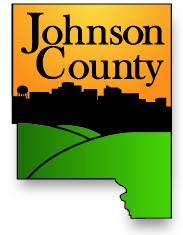Prescribed burning
Historically fire played an essential role in developing and maintaining Iowa’s prairie ecosystem. Today fire remains an important tool for the growth and regeneration of native vegetation. A well-timed burn favors native species by removing thatch and clearing the way for emerging seedlings. Prescribed fire is a valuable tool for enhancing and maintaining native plant communities. Fire also helps remove and prevent unwanted brush. At the same time, fire and smoke have the potential to create possible problems along roadways. Johnson County Road Department may from time to time use prescribed fire to manage native vegetation along roadways. Frequency and timing of burning can affect the sustainability and composition of right-of-way plantings. If you would like to burn roadsides adjacent to your property, please contact this office before you burn.
Spot spraying
Herbicides can be very effective for controlling undesirable plants on a short term basis. However, pesticides may also impact non-target species. Johnson County Road Department periodically applies herbicides to targeted species or locations along roadways. All applicators are trained and certified by the State of Iowa. Selection of chemicals is based on effectiveness, label constraints and residual effects on the environment. Private landowners sometimes ask about roadside spraying. The County Road Department will address requests for service as well as attempt to work with landowners who would like to manage the right of way without the use of herbicides by the County. Landowners have available to them the Roadside Maintenance Agreement to manage roadside vegetation without the use of herbicides by Johnson County. For more information on roadside herbicide application, please contact this office. Organic Farmers, vineyards, etc. are encouraged to become involved in this program.
Click here to see photos of species managed with spot spraying
Noxious & Invasive Weeds of Johnson County
Mechanical vegetation control
Johnson County periodically mows the road surface shoulders along our roadways. Frequency of shoulder mowing depends on safety considerations, road surface type and traffic count. Noxious weeds and unwanted volunteer woody plants may be spot mowed from time to time or when specifically requested. Landowners often ask about mowing roadsides. Frequent mowing of native vegetation in right of way or the “blanket mowing” of established roadside vegetation is highly discouraged. Vegetation management goals must meet certain safety and functional requirements before aesthetic and recreational consideration can be addressed.
Johnson County IRVM also manages roadside trees and brush in accordance with the County Brush Control Policy. Tools such as chainsaws and chippers are used, as well as heavy equipment such as excavators and bulldozers to remove trees.
Competitive plantings (forbs, grasses, etc.)
There are many ways to establish native vegetation in the right of way. The main tool you will need is patience. Prairies don’t establish like a lawn. With good seed, soil, and moisture, a prairie can be fairly well established in 3-4 years. As the planting matures, new species such as New England Aster will take the place of faster establishing species such as Black Eyed Susan. Johnson County uses several methods to plant roadside prairies such as hand seeding, broadcast seeding, no-till drill, and hydroseeding. The IRVM Program follows behind road maintenance and engineering projects and reseeds native grasses and wildflowers for wildlife habitat, erosion control, aesthetics, and safety. Almost all rural areas and many urban areas are being seeded with native plant material. Warm season plants exhibit tolerance to road surface de-icing materials and remain short during spring and early summer; enhancing visibility near intersections and field drives. Turf grass species are planted in some urban areas and typically in all right-of-way immediately in front of a residence. If adjacent property owners would like prairie species planted in front of their homes after road reconstruction, they should discuss species selection, appropriate locations, planting methods, establishment, and maintenance with the IRVM office.
Click here to see native grasses and wildflowers that are good choices for competitive planting
Using Native Plants in Roadsides
